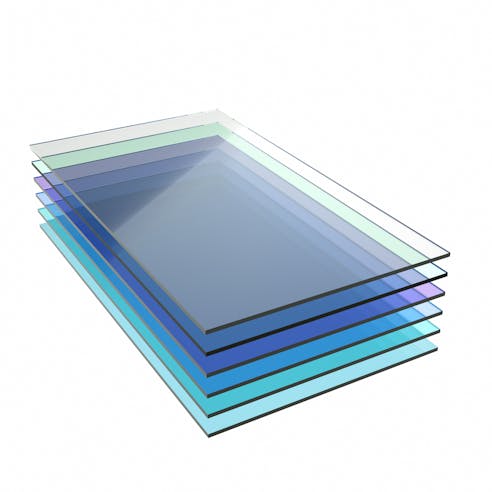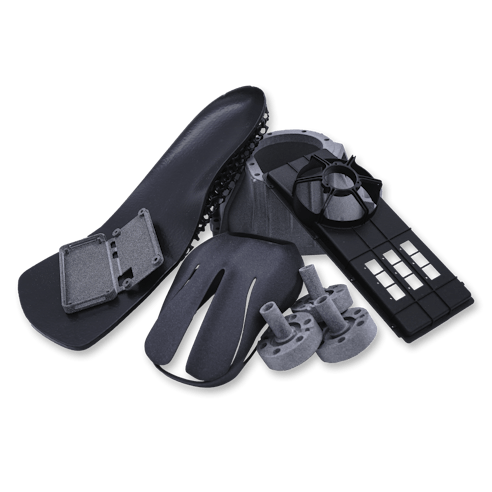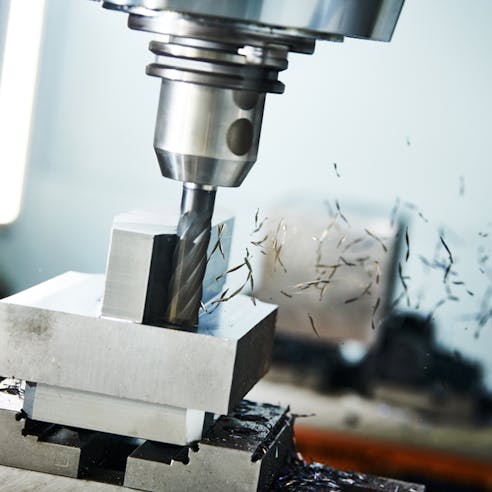Custom Plastic Fabrication Services
High-quality custom plastic parts in days | International prototype pricing includes tariffs | ISO 9001:2015, ISO 13485, IATF 16949:2016, AS9100D certified. ITAR registered.
Plastic can be processed using a wide range of manufacturing methods. One of the lowest-cost methods is plastic fabrication. Plastic fabrication includes techniques such as: machining, precision cutting, bonding, welding, and thermoforming. Xometry offers a custom plastic fabrication service that can help you succeed with any plastic fabrication project while also maintaining the highest levels of quality.
The Xometry Instant Quoting Engine® enables instant pricing, DFM feedback, and lead times on custom plastic components. What you see is what you pay. Internationally produced plastic prototypes include tariffs.
Plastic Fabrication Processes and Machinery
Plastic fabrication refers to the process of shaping, forming, or bonding plastic sheets, tubes, rods, or bars. Fabrication does not include melt processing techniques like injection molding. The plastic fabrication process typically starts by consulting an expert. During this phase, the specific requirements of the part are defined. The initial conceptual design can be analyzed to determine if it follows applicable DFM (Design for Manufacturing) guidelines. The operating conditions must be largely known as they will determine what type of plastic is best suited to your application. Typical factors to consider are: operating temperature, chemical exposure, and load cases. Once these have all been considered, the design can be finalized and fabrication drawings produced.
Depending on the design, there are a number of fabrication techniques and tools available, the most common are listed below:
- CNC Machining: Plastic machining can be fast and does not place excessive wear on tooling (unless the plastics are filled with carbon or glass particles). Cutting tools are kept sharp to avoid heat build-up during cutting.
- Bending: Most plastics can be bent. In some cases, they may need to be heated in order to bend easily. This is especially useful for more brittle plastics like acrylic.
- Welding: Plastic welding is typically done with a specialized extrusion welding tool. This tool generates hot air and plastic is fed into an extruder that melts and pushes the plastic from a nozzle. The operator can join plastic components using either fillet or butt welds. The weld bead fuses with the base material to create a homogeneous bond. Other techniques like ultrasonic welding are also employed to fuse plastic components together.
- Routing: Plastic can be formed using a router in the same manner as wood routers are used. Chamfers or rounds can be cut on sharp corners, and pockets can also be cut. High-speed rotary tools can cause the plastic to melt, so care must be taken to ensure the tools are sharp.
- Sawing: Many different sawing tools are available such as: jigsaws, circular saws, band saws, and table saws. When cutting plastic, purpose-made cutting blades are used which have a coarse tooth spacing.
- Thermoforming: Plastic sheets can be vacuum-formed over various shapes by heating the plastic and then draping it over a form. A vacuum is then applied that forces the heated plastic over the shape.
- Drilling: Plastics are easily drilled. However, drill bits must be kept sharp and speed relatively slow. Blunt drills and high speeds will often melt the plastic rather than drill through it.
During the fabrication process and prior to releasing the component, rigorous quality inspections are performed to ensure the part meets stringent quality standards. Typical inspections can include: material checks, dimensional checks, and general visual checks.
Benefits of Plastic Fabrication
Plastic fabrication offers a wide array of different benefits. Some of the most important are listed below:
- Versatility
- Light Weight
- Cost Effective
- Durability
- Chemical Resistance
- Low Friction

Versatility
There are many different plastics available that cover a wide range of properties. This makes it easy to find the perfect plastic for your unique application. Specific plastics can also be further modified with additives to improve UV, thermal, and chemical resistances. In addition to their physical properties, plastics can be formed using a wide range of techniques.
Light Weight
Plastics have densities that hover in the range of 1000 kg/m3 and some plastics have strength approaching that of aluminum. This makes plastic ideal for applications in which low weight is a key design requirement, for example in the aerospace or automotive industries.
Cost Effective
Some plastics known as commodity plastics can be very cost effective when compared to other construction materials like metals. Coupled with common plastic fabrication techniques, this lower cost is further amplified as expensive tooling is not required.
Durability
Plastics are generally tough materials that can withstand impact loads without fracturing; they do not rust or corrode like metals. As such, plastics are ideal for hard-wearing applications such as those encountered in public spaces.
Chemical Resistance
Some plastics are able to resist extremely corrosive chemicals due to which metals would quickly become corroded. This makes certain plastics ideal for use in harsh environments like those found in chemical processing facilities.�
Low Friction
Some plastics like PTFE (polytetrafluoroethylene) or UHMWPE (ultra-high-molecular-weight polyethylene) have very low coefficients of friction. This makes them ideal as a protective and low-friction liner for metal chutes like those used in bulk materials handling applications.
Ready to get started on your plastic fabrication quote?
Disadvantages of Plastic Fabrication
Despite its many benefits, plastic fabrication does have some downsides as listed below:
- Limited Temperature Resistance
- Susceptibility to Chemical Degradation
- Less Rigid Than Metal

Limited Temperature Resistance
While some plastics are able to resist relatively high temperatures, they do not come close to metals and are not suitable for very high-temperature conditions. Plastics tend to have accelerated creep when exposed to elevated temperatures.
Susceptibility to Chemical Degradation
While some plastics have excellent chemical resistance in general, more-commonplace plastics tend to degrade when exposed to specific chemicals. Even plastics with excellent chemical resistance like PVDF (polyvinylidene fluoride) will experience stress corrosion cracking over time.
Less Rigid Than Metal
While plastics are tough, they are not as rigid as metals and will undergo creep at much lower temperatures than metals. As such, plastics are not ideal for heavy-duty structural applications but can still be used for light-duty structural applications in which low weight is required.
Applications of Plastic Fabrication
Plastics are used in almost every industry. Listed below are some examples of plastic fabrication:
- Product Enclosures
- Displays
- Components
- Prototyping
- Packaging
- Process Tanks

Product Enclosures
Plastics are often used for product enclosures in a wide range of industries. Typical examples include: consumer electronics enclosures, household appliances, and scientific instrumentation and equipment.
Displays
Plastic is often used for marketing displays due to the wide range of colors, textures, ease of fabrication, and low cost of plastic. This allows advertisers to easily create eye-catching displays that can maintain their vibrant colors while also resisting long-term exposure to the outdoors.
Components
Specialized plastic components can be produced to fit an endless range of applications. Some examples can include: gears, cams, and valves. Precise components can be manufactured using techniques like CNC machining.
Prototyping
Plastic is cost-effective and easy to work with, which makes it an ideal material for prototyping. Designs can be iterated on without needing complex manufacturing processes and expensive equipment.
Packaging
The low cost and durability of plastic make it ideal for packing as it can be used to protect fragile components or food items during transport. Plastic can be formed into almost any shape to suit each unique packaging application.
Process Tanks
Process tanks are often made from plastics due to their chemical resistance. For example, electroless nickel plating tanks are often made from polypropylene panels that have been welded together.
Industries Served by Plastic Fabrication
Rapid machining has various applications, including:
- Electronics
- Automotive
- Healthcare
- Consumer Goods
- Aerospace
- Process Engineering

Electronics
Electronics make extensive use of plastic for their structural enclosures, electrical connections, and screen guards. This is due in part to the low weight of plastics, their low cost, as well as their ability to behave as electrical insulators.
Automotive
The automotive industry requires parts that are lightweight, tough, and long-lasting. Plastics that fit these requirements are used for a number of applications such as: gear wheels, valves, and exterior or interior panels.
Healthcare
Plastic fabrication is used in the healthcare industry due to its transparency to X-rays (for some grades), low weight, sterilizability, and chemical resistance. Typical applications include diagnostic equipment and surgical tools.
Consumer Goods
Household appliances, tools, consumer electronics, and product packaging all make extensive use of plastic fabrication. Its prevalence is due to its low raw material cost, low weight, and low-cost fabrication techniques.
Aerospace
Aerospace components need to be lightweight, strong, and resistant to a wide range of chemicals and environmental conditions. Plastic fabrication can be used to shape the plastic with the specific properties required into a long-lasting, low-weight part.
Process Engineering
Plastic in general has excellent resistance to chemicals. Regardless of the chemical that is being handled, there is most likely a type of plastic that can resist it. As such, plastic fabricated equipment like tanks, vessels, and piping are often used in the chemical processing industry.
Alternatives to Plastic Fabrication
Plastic fabrication might not meet your specific requirements; listed below are three potential alternatives:
- Metal Fabrication
- Wood Fabrication
- Composites

Metal Fabrication
Plastic fabricated parts do not always have the required temperature resistance and structural strength. In these cases, metal fabrication can be used instead. Metal fabrication is especially useful for heavy-duty equipment.
Wood Fabrication
Wood fabrication is ideal for prototyping as it is easy to work with and can be lightweight, especially when compared to metal. Low-cost wood-like MDF or chipboard is cheaper than plastic and is also lightweight. However, wood has no thermal or chemical resistance.
Composites
Composites are able to provide lightweight and strong components and are a suitable alternative to both metal and plastic fabrication. Composites are primarily manufactured by laminating sheets of glass or carbon fiber over a form to produce complex shapes and are widely used in the aerospace industry.
Why Choose Xometry for Custom Plastic Fabrication Services?

Endless Options
Choose from millions of possible combinations of materials, finishes, tolerances, markings, and certifications for your order.

Easy to Use
Get started with our easy-to-use platform and let our experts take care of managing the project from locating the right manufacturing partner to delivery logistics.

Vetted Network
We are ISO 9001:2015, ISO 13485, and AS9100D certified. Only the top shops that apply to become Suppliers make it through our qualification process.